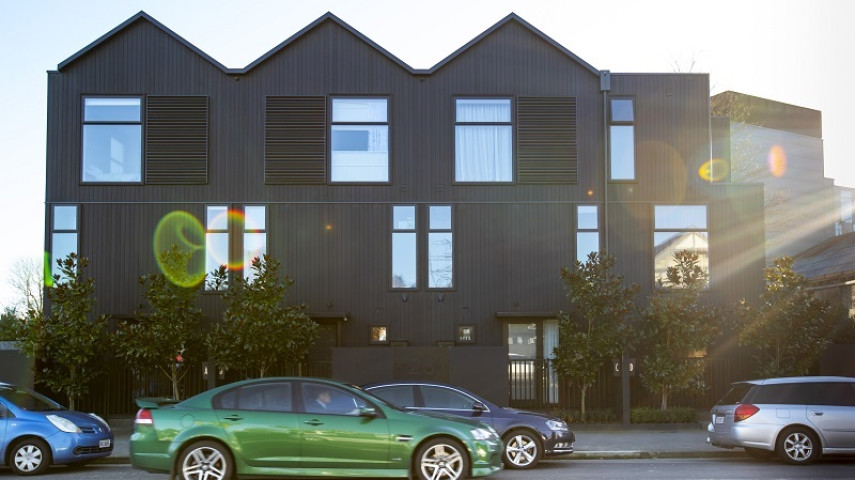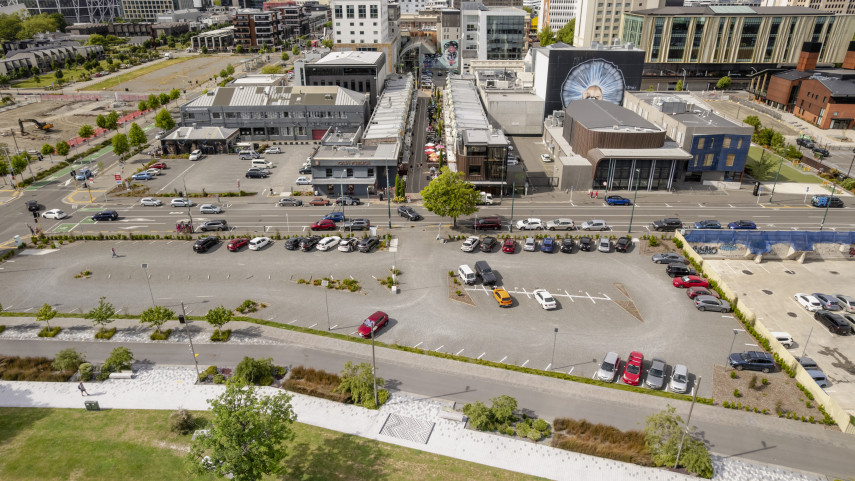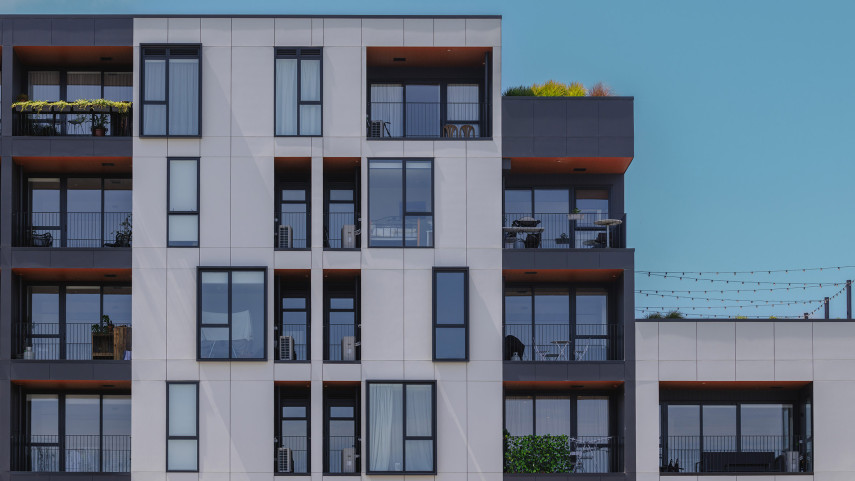Project 8011 is our residential programme for the Central City. Its purpose is to encourage more people to make the Central City their home.

By making the Central City a compelling place to live, work and play, we aim to draw in thousands of people from all walks of life and build upon its growing vibrancy. As we know, thriving neighbourhoods and strong communities are at the heart of some of the world's greatest cities.
The Central City already offers essential transport, recreation and other infrastructure to support residents and plenty of exceptional reasons to live here. What we need now is a greater demand for Central City living, and more homes of varying types and sizes.
We’re working together with our partners, developers, landowners and public agencies across a range of activities to make it happen. Our success relies on factors such as:
- public and private investment
- feasibility of development
- improving the potential of local areas for housing purposes
- developers connecting with buyers to generate housing projects and create sales
- creation of jobs, services, facilities and attractions in the Central City to give people reasons to consider living here.
Our six key goals
These goals are interrelated, overlap and support each other:
- More people – increasing the number and demographics of people living in the Central City.
- Housing choice – creating a range of housing choices that meet the needs of a diverse range of people.
- Highly liveable neighbourhoods – developing local communities that attract and retain residents.
- Encourage delivery – reducing the risks of development and improving feasibility.
- Support delivery – ensuring effective support and advice are provided to and used by Central City housing developers.
- Accelerate delivery – ensuring the delivery of Central City housing is accelerated and sustained.
The Project 8011 programme crosses these important project areas:
- Funding opportunities and incentives to support residential development and increasing demand for Central City homes.
- Advice and support for landowners and developers.
- Support for alternative housing approaches and projects to improve housing choice.
- Identifying site development opportunities.
- Neighbourhood-level planning and engagement to create liveable neighbourhoods.
- Site investigation, evaluation and feasibility.
- Marketing Central City living and residential developments.
How each project area is progressing
Check out the recent Central City Biannual Reports(external link).
Here's a snapshot of the Central City Residential Programme (Project 8011) projects we're currently working on and support we're providing in the Central City.
Supporting alternative housing approaches
We've looked at ways to support alternative approaches to housing, to better meet the needs of a diverse range of households.
This took a three-pronged approach to support alternative housing approaches and projects:
- Research to identify the best mechanisms to support alternative housing providers
- Promoting alternative housing in the Central City; and
- Offering ongoing support and advice to alternative providers.
Find out more about the resulting support for alternative housing in the Central City.
Would you like to know more? If you're interested in this project email us at centralcity@ccc.govt.nz
Development opportunities
In order to continue to grow the Central City residential population, there needs to be a steady supply of potential development sites bringing new homes to the Central City.
Through a close relationship with the Vacant Sites Programme, staff are reaching out to Central City landowners to gauge their future intentions and offer development information to help owners to better understand the development potential of their sites. The aim is to generate momentum and enthusiasm to bring forward development plans.
Our central neighbourhoods
Our early engagement with residents has helped us learn more about the diverse range of neighbourhoods(external link) in the Central City. A series of Conversation Walks (see below) provided the project team with insights from residents about places, strengths and opportunities in Central City neighbourhoods.
Our current focus is on the South-East of the Central City which provides a significant opportunity to grow and transition. The South-East Neighbourhood Plan(external link), which has been co-developed through engagement, sets out the ambitions and actions for this neighbourhood.
Is this project of interest to you? To find out more, email us at urbanregeneration@ccc.govt.nz.
A neighbourhood walks programme ran in 2020 in order to gauge people’s thoughts and experiences of the different Central City neighbourhoods. Informally, the walks have been an opportunity for people to discover new spaces, talk with each other about Central City living and make connections with like-minded people.
The walks were led by a local resident and were typically attended by other residents and people who are interested in living in the Central City. Nine walks were completed in the Central City.
Learn more about the key reflections and learnings from these walks:
- Central City South summary [PDF, 1.1 MB](external link)
- Inner City East summary [PDF, 1.1 MB](external link)
- Avon/Chester summary [PDF, 1.1 MB](external link)
- Moa summary [PDF, 990 KB](external link)
- Victoria summary [PDF, 1008 KB](external link)
- Inner City West summary [PDF, 1.1 MB](external link)
- Hagley summary [PDF, 1 MB](external link)
- Peterborough summary [PDF, 1.1 MB](external link)
- South East summary [PDF, 1011 KB](external link)
The programme of neighbourhood walks is funded by the Council and organised by Te Putahi(external link)(external link).
Information gathered on the walks is being used to help inform neighbourhood planning and the Council’s Central City Residential Programme(external link)(external link).
If you are interested in hosting your own walk in your neighbourhood please contact centralcity@ccc.govt.nz
Gap Filler and the Council worked together in the Latimer neighbourhood – an area bounded by Armagh, Fitzgerald, Lichfield and Manchester Streets - from early 2021 to late 2023. With lots of new homes being built in this area, the population is set to grow.
The Council wants to support this developing neighbourhood to develop a stronger sense of community. Through the Central neighbourhood walks [PDF, 1.1 MB] series, a key opportunity was identified to support and strengthen neighbourhood connections. This led to an asset mapping project, which has involved understanding and sharing information about the strengths and community champions of Latimer’s residents.
This project has now been completed, and the tools are available for wider use. Several community events and the development of a Neighbourhood Book have helped people living in this neighbourhood to become more connected and in a better position to organise community-led projects.
Process steps and outputs:
- Residents in two blocks within the Latimer neighbourhood were given a quick and fun personality test [PDF, 670 KB] to discover their relative strengths in the community.
- Residents put the relevant bird sticker [PDF, 1.8 MB] on their mailboxes to reveal their personality type to their neighbours.
- Residents were also invited to a community event where they were involved in a practical, fun activity and could have further conversations about strengthening their neighbourhood.
- Residents created a profile [PDF, 744 KB] for a neighbourhood book.
- The Neighbourhood Book is an ongoing resource for residents to stay connected and organise projects and events.
- Project learnings [PDF, 2.9 MB] and a process summary [PDF, 69 KB] were compiled and inform ongoing support for the community.
If you are inspired to run a similar process in your neighbourhood, you can use the links above to get started. See also community funding support or email UrbanRegeneration@ccc.govt.nz if you have any questions.
Got a question or want to know more?
Get in touch. If you have development interests in the Central City or would just like to know more about Project 8011, email us at centralcity@ccc.govt.nz.
Related news

Plans for New Regent St extension
Pedestrian access from one of the Central City’s favourite attractions – New Regent Street – is set to be extended through to the Ōtakaro Avon River promenade.
3 Dec 2025
Christchurch withdraws from further housing intensification
Christchurch’s bid to opt out of further housing intensification has been accepted.
10 Nov 2025
Spark an open-air romance with music this summer
Mitre10 Sparks is set to dazzle in 2026 with a special Valentine’s Day-themed extravaganza.
10 Nov 2025